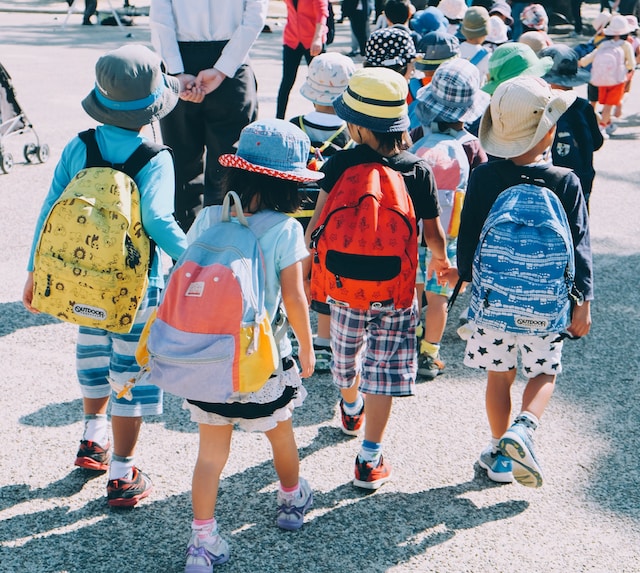When it comes to the upbringing of our children, instilling discipline ranks high on the list of priorities. However, effectively disciplining kids is often a daunting challenge faced by many parents. But fret not! In this all-inclusive guide, we will delve into a multitude of strategies and techniques to assist you in mastering the art of disciplining your little ones.
So let’s embark on this journey together and unlock the secrets to becoming a more effective and empowered parent!
1. Understanding the Importance of Discipline
Discipline plays a crucial role in shaping a child’s behaviour and character. By teaching them self-control and appropriate conduct, discipline provides the necessary structure for children to thrive. When children understand the boundaries and expectations set by their parents, they feel secure and learn to make better choices. Effective discipline helps children develop important life skills such as empathy, responsibility, and self-discipline.
2. Setting Clear Boundaries
Establishing clear boundaries is essential for effective discipline. Children need to understand what is acceptable and what is not. Clearly communicate your expectations, rules, and consequences to your child. Use simple and concise language to ensure they grasp the concepts easily. By setting clear boundaries, you provide your child with a framework to navigate their behaviour.
3. Effective Communication
Communication is key in any relationship, including the parent-child dynamic. When disciplining your child, it is crucial to maintain open lines of communication. Listen attentively to your child’s thoughts and feelings, and encourage them to express themselves. Engage in meaningful conversations to understand their perspective, and use these moments as teaching opportunities.
4. Positive Reinforcement
Positive reinforcement involves acknowledging and rewarding good behaviour. Instead of solely focusing on the negative, emphasize and praise your child’s positive actions. This approach motivates children to repeat desirable behaviour and strengthens their self-esteem. Whether it’s a simple compliment, a sticker chart, or a small treat, positive reinforcement can be a powerful tool in disciplining children effectively.
5. Time-Out Technique
The time-out technique is a widely used method to address misbehaviour in children. When your child engages in inappropriate behaviour, calmly and firmly instruct them to take a time-out. Choose a designated spot, such as a chair or a specific room, where they can reflect on their actions. The duration of the time-out should be brief, typically corresponding to their age (e.g., three minutes for a three-year-old). This technique allows children to calm down and provides them with an opportunity to self-regulate their behaviour.
6. Consistency is Key
Consistency is vital when it comes to discipline. Children thrive in an environment where expectations and consequences remain consistent. Establish a set of rules and enforce them consistently. Inconsistency can confuse children and undermine the effectiveness of discipline. Remember to discuss and align expectations with any caregivers involved in your child’s life to maintain a united front.
7. Leading by Example
Children are observant and learn by watching their parents’ behaviour. As a parent, it is crucial to model the behaviours and values you want your child to adopt. Practice self-discipline, patience, and respect in your own actions and interactions. When your child sees you exhibiting the desired behaviour, they are more likely to follow suit.

8. Redirecting Behavior
Redirecting behaviour involves guiding your child towards more appropriate actions when they display inappropriate behaviour. Instead of simply reprimanding or punishing them, offer alternative choices and suggest better ways to express themselves. This technique helps children learn problem-solving skills and redirects their energy towards positive outlets.
9. Natural Consequences
Natural consequences are the outcomes that naturally follow a child’s actions. Instead of intervening and rescuing your child from every mistake, allow them to experience the consequences of their choices (when it is safe to do so). This approach helps children understand the direct link between their actions and the outcomes, fostering responsibility and accountability.
10. Establishing Routines
Routines provide structure and predictability for children, which contributes to their sense of security. Establish consistent daily routines for activities such as meals, bedtime, and homework. By following a predictable schedule, children develop a sense of stability and are more likely to exhibit self-discipline.
11. Dealing with Challenging Behavior
Challenging behaviour is a common aspect of childhood, and it is essential to handle it with care and patience. When faced with challenging behaviour, remain calm and composed. Take a moment to assess the situation, identify the underlying cause, and respond accordingly. Use techniques such as distraction, positive reinforcement, or time-outs to address challenging behaviour effectively.
12. Teaching Problem-Solving Skills
Teaching children problem-solving skills empowers them to find constructive solutions to conflicts and challenges. Encourage your child to brainstorm ideas and explore different perspectives. Help them identify possible consequences and evaluate the pros and cons of their choices. By teaching problem-solving skills, you equip your child with valuable tools to navigate various situations.
13. Encouraging Self-Discipline
While external discipline techniques are essential, fostering self-discipline in children is equally important. Encourage your child to develop self-control by providing opportunities for them to make decisions and face the consequences. Foster independence and allow them to take responsibility for their actions, gradually guiding them towards becoming self-disciplined individuals.
14. Addressing Specific Age Groups
Discipline techniques may vary depending on the age of your child. Let’s explore age-appropriate discipline strategies for different developmental stages:
– Toddlers (1-3 years old):
Toddlers are exploring their independence and testing boundaries. Use simple language, consistent routines, and redirection techniques to discipline them effectively.
– Preschoolers (3-5 years old):
Preschoolers are developing their social skills and understanding of rules. Reinforce positive behaviour, offer choices within limits, and use time-outs or logical consequences when necessary.
– School-Age Children (6-12 years old):
School-age children benefit from clear expectations, consistent consequences, and problem-solving discussions. Involve them in rule-making and allow them to take ownership of their behaviour.
– Teenagers (13+ years old):
Teenagers are asserting their independence while still needing guidance. Encourage open communication, establish reasonable boundaries, and involve them in decision-making processes.
15. Understanding Developmental Stages
Understanding the developmental stages of children is crucial for effective discipline. Each stage brings unique challenges and opportunities. Educate yourself on the physical, emotional, and cognitive changes that occur during different developmental milestones. By understanding your child’s stage of development, you can tailor your discipline approach accordingly.
16. The Power of Empathy
Empathy plays a significant role in discipline. When disciplining your child, strive to understand their perspective and emotions. Validating their feelings and showing empathy helps build trust and strengthens the parent-child bond. By demonstrating empathy, you create an environment where your child feels heard and understood.
17. Keeping Calm in Difficult Situations
Discipline moments can be stressful and challenging for parents. It is essential to remain calm and composed when faced with difficult situations. Take a deep breath, count to ten if necessary, and respond in a measured and controlled manner. Keeping your emotions in check models emotional regulation for your child.
18. Avoiding Physical Punishment
Physical punishment, such as spanking or hitting, is not an effective or recommended discipline technique. Research consistently shows that physical punishment can have negative long-term effects on children’s well-being and can damage the parent-child relationship. Focus on positive discipline techniques that promote respect and understanding.
19. Seeking Professional Help
In some cases, seeking professional help may be necessary. If you are facing persistent behavioural challenges or if your child’s behaviour is causing significant distress, consider consulting a paediatrician, therapist, or child behaviour specialist. These professionals can provide guidance, support, and additional strategies tailored to your child’s specific needs.
20. Common Mistakes to Avoid
While disciplining your children, it is essential to be aware of common mistakes that can hinder effective discipline. Avoid these pitfalls:
- Inconsistency in rules and consequences
- Overlooking the power of positive reinforcement
- Reacting impulsively and harshly
- Neglecting to consider the underlying causes of misbehaviour
- Using discipline as a form of punishment instead of a teachable moment

Conclusion
Disciplining your children effectively is a journey that requires patience, consistency, and understanding. By implementing the strategies and techniques discussed in this guide, you can create a positive and nurturing environment that promotes self-discipline, character development, and healthy parent-child relationships. Remember, discipline is not about control or punishment; it is about guiding and teaching your child to become a responsible and respectful individual.
Frequently Asked Questions (FAQs)
Q1: How do I discipline my child without yelling or losing my temper?
A: Discipline can be achieved without resorting to yelling or losing your temper. Try using calm and assertive communication, setting clear boundaries, using time-outs, and practising self-care to manage your own emotions effectively.
Q2: Is it possible to discipline my child effectively without punishment?
A: Yes, discipline can be effective without relying solely on punishment. Positive discipline techniques such as positive reinforcement, redirection, natural consequences, and logical consequences can be highly effective in teaching appropriate behaviour.
Q3: What should I do if my child’s behaviour doesn’t improve despite my efforts to discipline?
A: If your child’s behaviour continues to be a challenge despite your best efforts, consider seeking professional help. A paediatrician, therapist, or child behaviour specialist can provide guidance and support tailored to your child’s specific needs.
Q4: Can discipline negatively impact the parent-child relationship?
A: Discipline, when approached with empathy and respect, should not negatively impact the parent-child relationship. In fact, effective discipline can strengthen the bond between parent and child, as it teaches important life skills and promotes a sense of security.
Q5: How can I promote self-discipline in my child?
A: Promoting self-discipline involves providing opportunities for your child to make decisions, take responsibility for their actions, and experience the natural consequences of their choices. Encourage independence, problem-solving, and the development of self-control skills.
Q6: What role do family values play in discipline?
A: Family values form the foundation for discipline. Clearly define and communicate your family values, emphasizing concepts such as respect, honesty, and kindness. Aligning discipline with these values helps children understand the importance of appropriate behaviour.








Discussion about this post